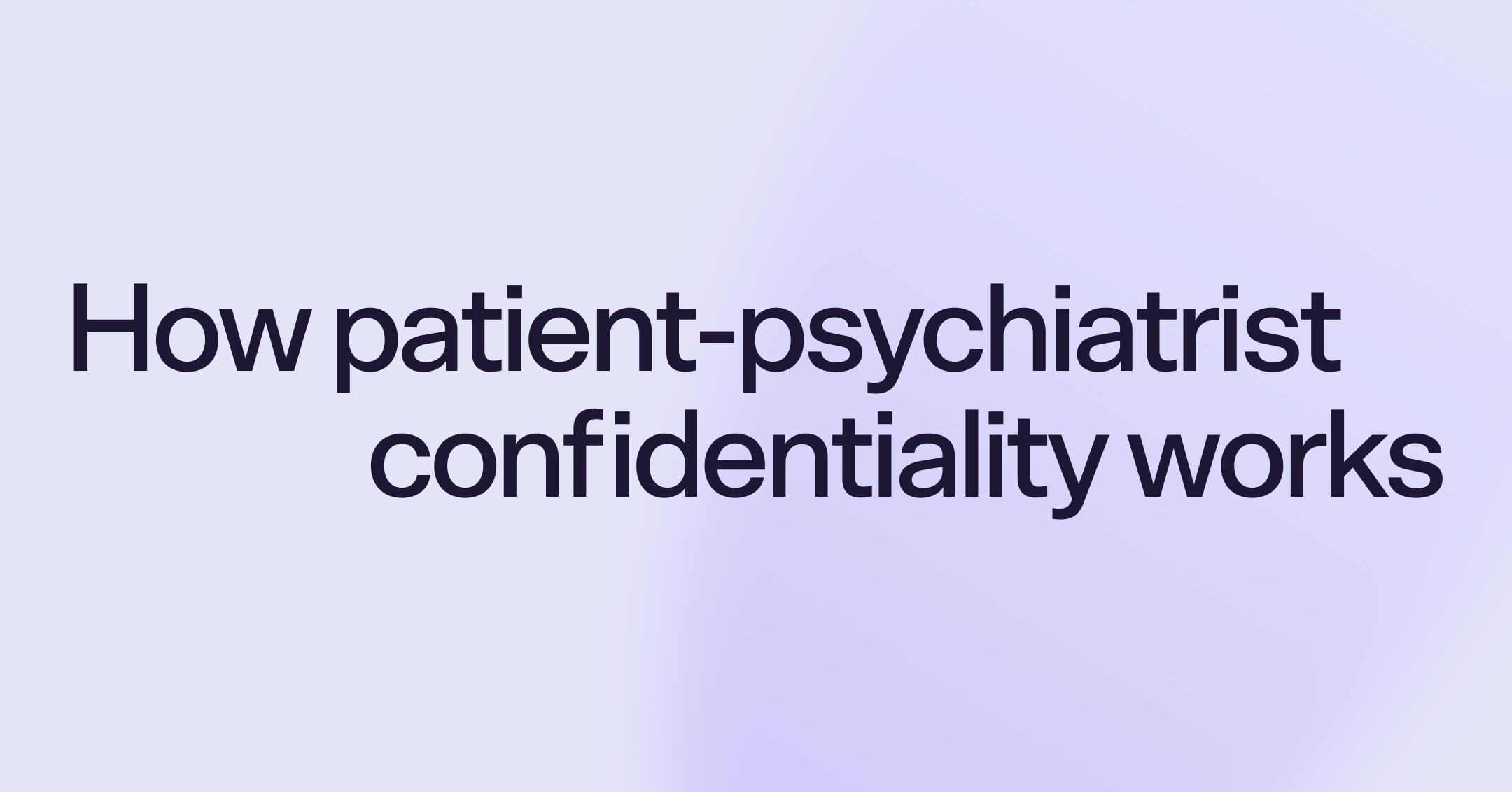Maladaptive behaviors are actions or coping strategies that may provide short-term relief but harm your well-being or functioning over time.
Some of the most common forms of maladaptive behaviors include avoidance, procrastination, and impulsivity, but they can take many forms.
With the right support, you can learn healthier coping strategies to replace unwanted behaviors.
Have you ever tried to change a problematic behavior or form a new habit? If so, you know how challenging it can be. Maladaptive behaviors are coping mechanisms that “worked” in the past but now cause negative consequences and hinder personal growth. They often represent an attempt to “escape” our present reality or avoid discomfort.
For example, maybe you struggle with procrastination and it’s hampered your career trajectory. Or perhaps you have trouble keeping your substance use under control.
If you look closely at what’s driving these behaviors, it’s often an attempt to resolve an unmet need or reduce emotional pain. These needs in and of themselves aren’t good or bad. They represent universal parts of the human experience that often have roots in childhood.
If you’re experiencing a behavior that you want to change, know that you’re not alone and that your behavior doesn’t define you. With the right support, you can learn to replace maladaptive behaviors with coping skills that strengthen your well-being.
What are common types of maladaptive behaviors?
Maladaptive behaviors can take many forms, but here are a few that are more common than others.
Avoidance and procrastination
We’ve all been there. That task or assignment has been lingering on your to-do list and the deadline is fast approaching. But every time you think of getting started you find an excuse to push it off. Everyone has responsibilities at home, work, or school we’d rather not face.
But avoiding situations and delaying responsibilities can lead to negative consequences. For example, let’s say you have a report due to your boss at 5 pm on a Friday. Now it’s Thursday and you haven’t even started. You know you’ll need to pull an all-nighter and work through the day tomorrow to get it done. When the deadline rolls around you’re exhausted and the report is obviously not your best work.
Impulsive behavior
Similarly, have you ever acted impulsively, chasing a temporary mood boost from instant gratification? Impulsivity can take many forms such as substance misuse, gambling, or overeating. This form of maladaptive behavior is often an attempt to “drown out” discomfort with a brief period of euphoria.
But, as is the case with all maladaptive behaviors, these positive feelings don’t last and the behavior often causes additional problems. For example, maybe you overspend in an attempt to cope with stress, trauma, or other issues. This might lead to credit card debt or strained relationships with loved ones.
Self-isolation
Another common maladaptive behavior is self-isolation. This occurs when a person withdraws from social interactions in response to stress. But declining invitations from friends or family and avoiding activities you used to enjoy can make it difficult to maintain your support network.
The challenge is that the times when we’re more likely to self-isolate are often the times when we need support the most. For example, maybe every time you have an argument with your partner you shut down and leave the room without communicating. While it can be healthy to take some time to cool off and reconvene the conversation later, self-isolation in the face of conflict usually makes the conflict worse.
The care you need, when you need it
Learn how Rula can support your mental health journey
What are the causes and triggers of maladaptive behavior?
Maladaptive behavior doesn’t just happen. It’s often a coping strategy learned early in life. These behaviors can get reinforced over time — offering quick relief in the moment — until they become part of a repeated pattern, sometimes called a behavior crisis cycle. The good news is that patterns can be changed.
They often develop from two main sources: past trauma or negative experiences and emotional dysregulation.
Trauma and negative experiences
Most maladaptive behaviors have roots in past traumas or negative experiences, usually in childhood. They are often learned behaviors that we adopted in an attempt to meet our basic needs and they tend to “stick” because at one time or another they “worked.”
For example, perhaps you consider yourself a people pleaser. Whenever things get tense you bend over backwards to make other people comfortable, often at your own expense. This behavior often occurs in people who grew up in high-conflict homes where unpredictable shifts in mood were the norm. You may have learned that you could temporarily stabilize your environment by anticipating and prioritizing others’ emotional needs above your own.
Emotional dysregulation
Put simply, emotional dysregulation means difficulty managing and controlling emotions.
Many maladaptive behaviors arise from attempts to manage overwhelming or unpredictable emotions — either our own or others’. They often begin at a time in our lives when we haven’t yet developed healthy alternatives or effective maladaptive coping mechanisms. This can lead to a cycle of using these behaviors as a short-term solution with diminishing positive results over time.
Maladaptive behaviors don’t need to be permanent and engaging in them doesn’t mean you have a mental illness (although this can be the case sometimes). With some practice and the right support, you can learn to adopt healthy coping strategies that can replace your unwanted behaviors.
How can I change maladaptive behaviors?
The first step in changing maladaptive behaviors is learning to identify them. By cultivating greater self-awareness you can begin to be more mindful of your behaviors and their triggers.
Many people find that journaling helps with this part of the process. Consider taking a few minutes a day to jot down what happened before an undesired behavior occurred as well as what happened afterwards. Over time, it’s likely that some patterns will emerge and you can use this insight to reveal what’s driving the behavior.
For example, maybe you notice that you’re more likely to abuse alcohol on days when your workday was very stressful. You can identify that the underlying need is to calm anxiety, frustration, or whatever uncomfortable emotions seem to spike on those days. While there’s absolutely nothing wrong with wanting to reduce emotional discomfort, there are healthier ways to do so.
Of course, most of the maladaptive habits we struggle with didn’t form overnight. So it’s important to remember that they probably won’t be resolved overnight either. As you set out to change your behavior, remember to be patient with yourself and set realistic goals. Break bigger, long-term goals into smaller, achievable steps you can use to build positive momentum toward meaningful change.
Dig deeper:
As you progress, try experimenting with new techniques and pay attention to what works best for you. To get you started, try practicing some of the following coping strategies as you begin your behavior change journey:
Mindfulness: Slow down and pay attention to what’s happening around you and in your mind and body. Practice observing your thoughts without judgment.
Deep breathing exercises: When emotions are running high, stop to take a few deep breaths to calm your central nervous system. Slowing inhale, pause, and exhale. Repeat several times.
Journaling: You don’t have to journal every day or use a specific format for it to be effective. If you’re trying to change a behavior, keep some notes on when it occurs so that you can identify your triggers.
Movement: Whether it’s running, yoga, or pickleball, engaging in exercise you enjoy can help you reduce stress and stave off maladaptive behaviors.
Creative expression: Having a creative outlet like drawing, painting, or dance can help you express and release uncomfortable emotions in healthy ways.
Maladaptive behavior often starts as a way to cope. I help clients see that these behaviors aren’t signs of failure. They’re signals that it’s time to learn new tools for support and growth.

Brandy Chalmers, LPC
Clinical reviewer
Find a behavior-change therapist with Rula
In addition to replacing maladaptive behaviors with healthier ones, many people find that working with a mental health professional can help them resolve maladaptive behaviors. Talking to a therapist can help you increase your self-awareness, develop more self-compassion, and learn new coping mechanisms.
At Rula, we believe that finding the right therapist to support you on your behavior change journey shouldn’t have to be a complicated process. In just a few steps, we’ll help you find the right therapist for your needs who also takes your insurance.
Rula's editorial process
Rula's editorial team is on a mission to make science-backed mental health insights accessible and practical for every person seeking to better understand or improve mental wellness.
Members of Rula’s clinical leadership team and other expert providers contribute to all published content, offering guidance on themes and insights based on their firsthand experience in the field. Every piece of content is thoroughly reviewed by a clinician before publishing.





